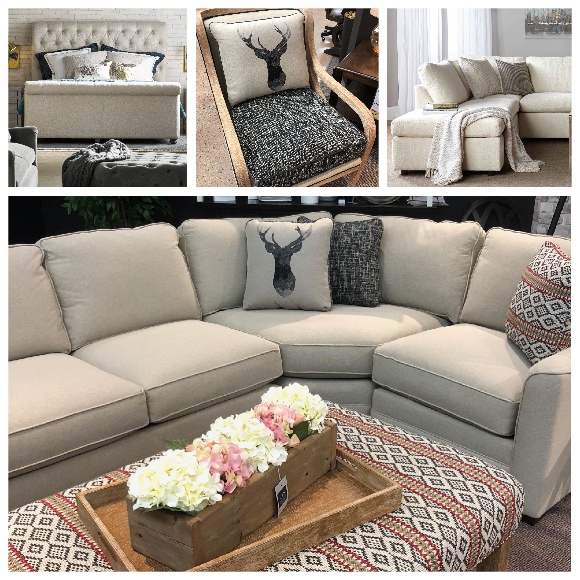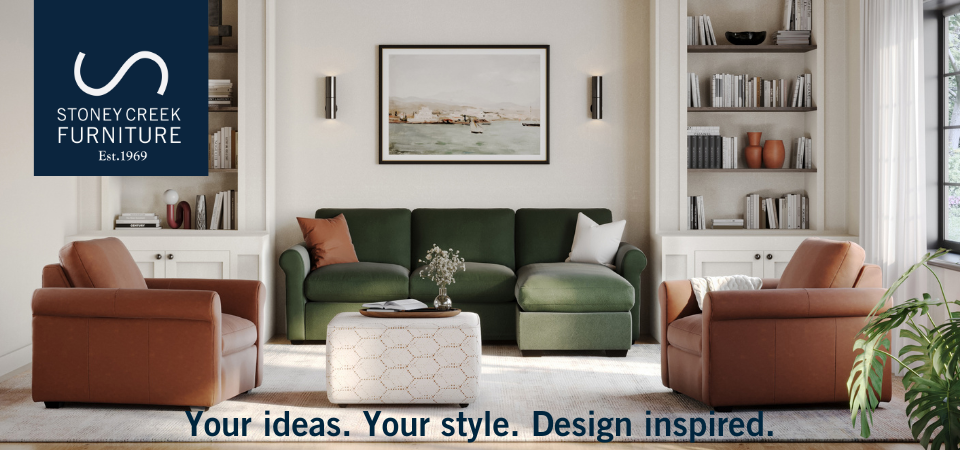Have you heard of hygge and wabi-sabi? They are lifestyle/décor approaches that are rooted in very different cultures, yet they encompass philosophies that are beautifully intertwined. Both are about appreciating simplicity, embracing comfort and finding joy in everyday pleasures. Hygge and wabi-sabi are trending right now, yet they reflect an aesthetic that is timeless. Sound interesting? Here’s more information about each concept – and how you can bring hygge and wabi-sabi sensibilities to your home.

Hygge is all about being comfortable, cozy, content and peaceful. Layer with pillows, throws and warm textures.
Hygge is a Danish word used to describe a special feeling or moment.
It’s a way of living for the Danes and an important part of their culture. Some say it’s the ‘art of creating intimacy’. Hygge is all about being comfortable, cozy, content and peaceful, whether alone or with friends and family. Hygge is not something you buy, although some items can certainly help foster the feel-good of hygge. Like wabi-sabi, hygge isn’t artificial or contrived; it simply is. That said, here are a few ideas to help set the stage for hygge in your home:
-
- Plenty of pillows, throws and cushions in soft fabrics.
- Lots of candles – and a real fireplace would be nice!
- Comfortable, generous furnishings to cuddle up in.
- An armchair in a corner for reading.
- Knitted and handcrafted items.
- A simple wood dining room table and comfy chairs to host dinner parties with friends.
Wabi-sabi is ancient idea founded in Zen Buddhism.
It’s about appreciating the beauty of the imperfect, whether through wear, age or use. It’s in opposition to our modern obsession with perfection and organization – instead welcoming flaws, cracks and idiosyncrasies. Wabi-sabi isn’t linear or symmetrical; rather it’s wonderfully random and easy-to-live with. It’s about not sweating the details – a little rust and a few paint chips are fine. It’s about seeing the story behind the flaws and enjoying it. How can you bring wabi-sabi to your home?
-
- Blend vintage and heirloom with newer pieces – eclectic is welcome.
- Handmade is perfect – and remember, natural is best, like pottery for example.
- Exposed brick and beams suit this style.
- Leather and furnishings with distressing or mark are on trend, but the distressing should come from natural wear.
- Choose wood grains that are uneven.
- Look for organic and natural materials like cotton and linen – a little wrinkling is good!
- The key word is ‘authentic’ – wabi-sabi is never pretentious or fake.
- Neutral décor works well with wabi-sabi, keeping the palette muted and subtle.
What’s truly beautiful about hygge and wabi-sabi is that they both focus on acceptance and simplicity – enjoying life in the moment and not obsessing about perfection. They take a genuine approach to home décor that creates a perfect escape from today’s demanding world…

Leave a Reply